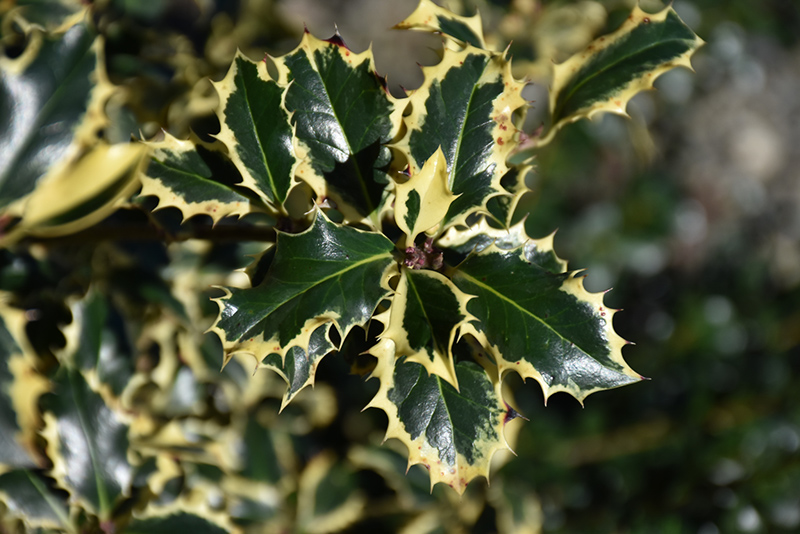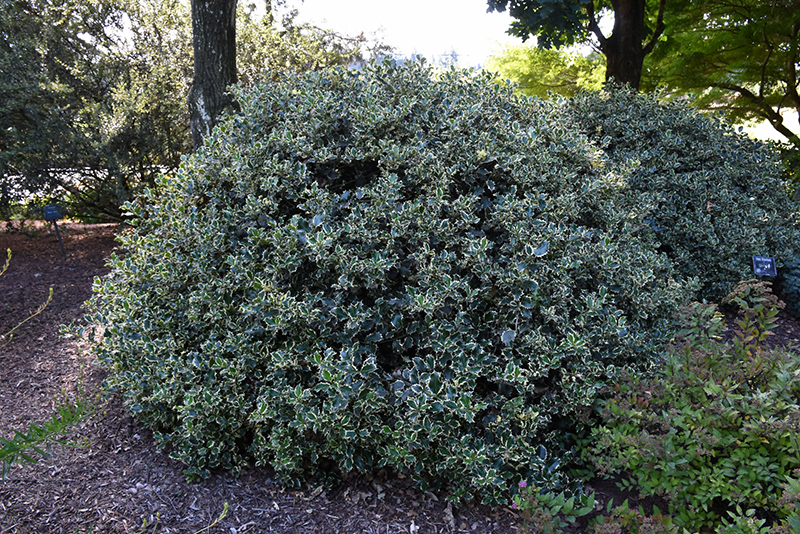PLANT FINDER
Santa's Delight Holly
Ilex aquifolium 'Sadezam'
Height: 12 feet
Spread: 8 feet
Sunlight:
![]()
![]()
Hardiness Zone: 5b
Description:
Deep blue-green leaves are bordered by a wide creamy-white margin which changes to pink in fall; lustrous red berries compliment the foliage and persist into winter; has proved to be very winter hardy
Ornamental Features
Santa's Delight Holly is primarily grown for its highly ornamental fruit. It features an abundance of magnificent red berries in mid fall. It has attractive creamy white-variegated bluish-green foliage which emerges cherry red in spring. The small glossy oval leaves are highly ornamental and turn pink in the fall, which persists throughout the winter.
Landscape Attributes
Santa's Delight Holly is a dense multi-stemmed evergreen shrub with a distinctive and refined pyramidal form. Its relatively fine texture sets it apart from other landscape plants with less refined foliage.
This is a relatively low maintenance shrub, and is best pruned in late winter once the threat of extreme cold has passed. It is a good choice for attracting birds and bees to your yard. It has no significant negative characteristics.
Santa's Delight Holly is recommended for the following landscape applications;
- Mass Planting
- Hedges/Screening
- General Garden Use
- Naturalizing And Woodland Gardens
Planting & Growing
Santa's Delight Holly will grow to be about 12 feet tall at maturity, with a spread of 8 feet. It has a low canopy with a typical clearance of 1 foot from the ground, and is suitable for planting under power lines. It grows at a medium rate, and under ideal conditions can be expected to live for 50 years or more.
This shrub does best in full sun to partial shade. It prefers to grow in moist to wet soil, and will even tolerate some standing water. It is particular about its soil conditions, with a strong preference for rich, acidic soils. It is quite intolerant of urban pollution, therefore inner city or urban streetside plantings are best avoided, and will benefit from being planted in a relatively sheltered location. Consider applying a thick mulch around the root zone in winter to protect it in exposed locations or colder microclimates. This is a selected variety of a species not originally from North America.
A NetPS Plant Finder tool


